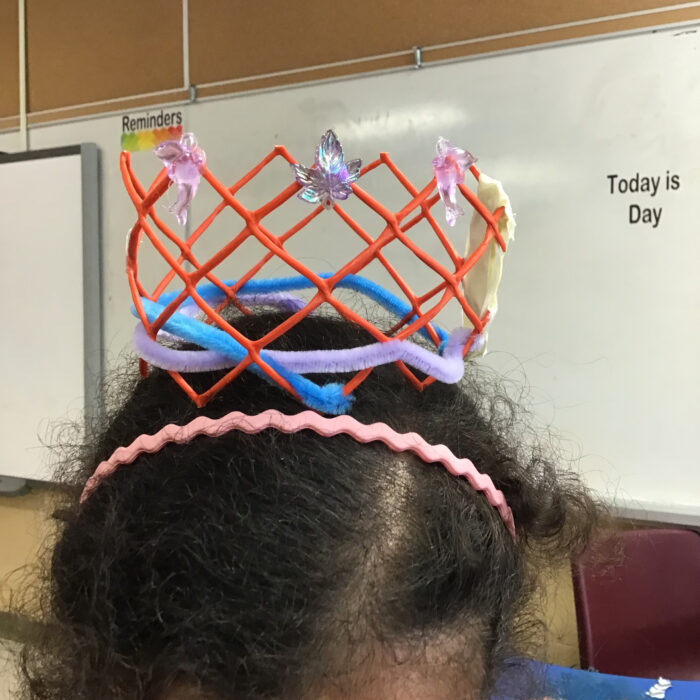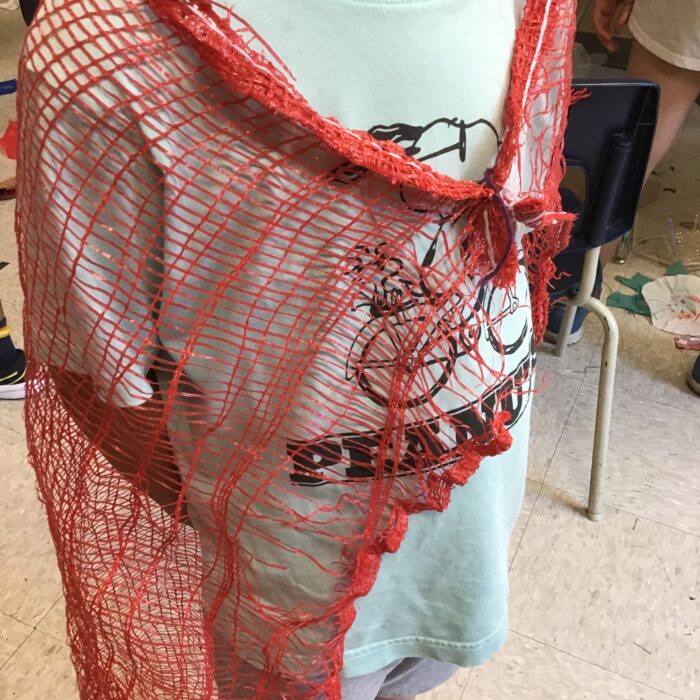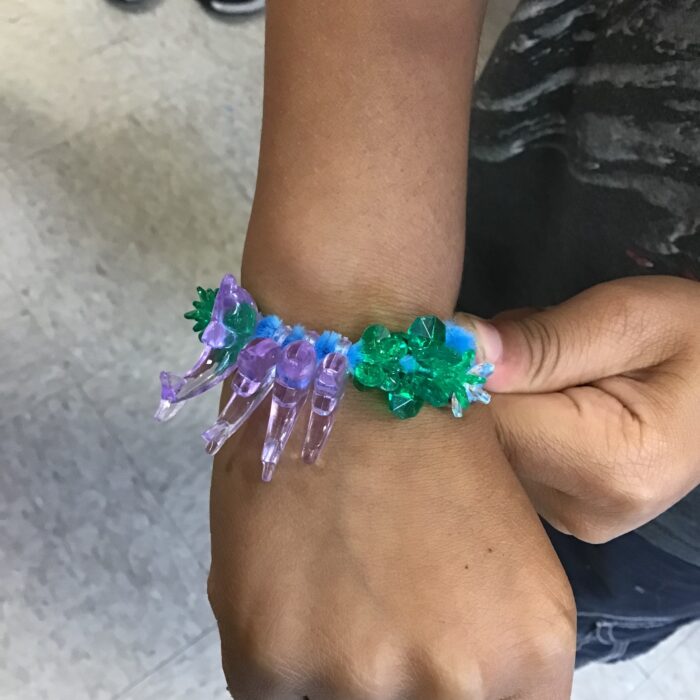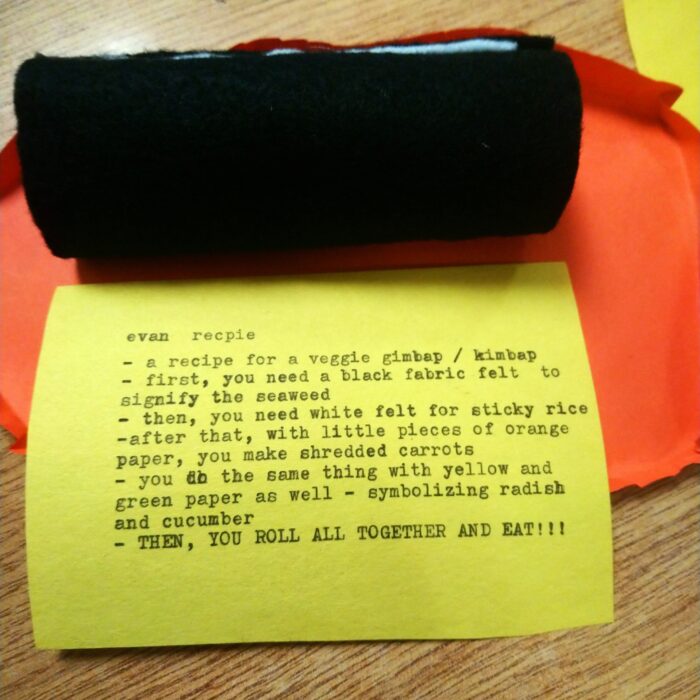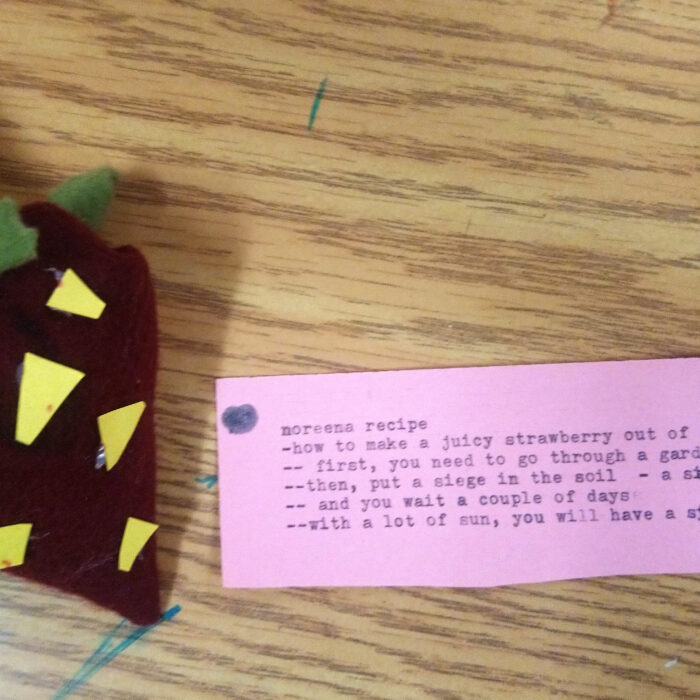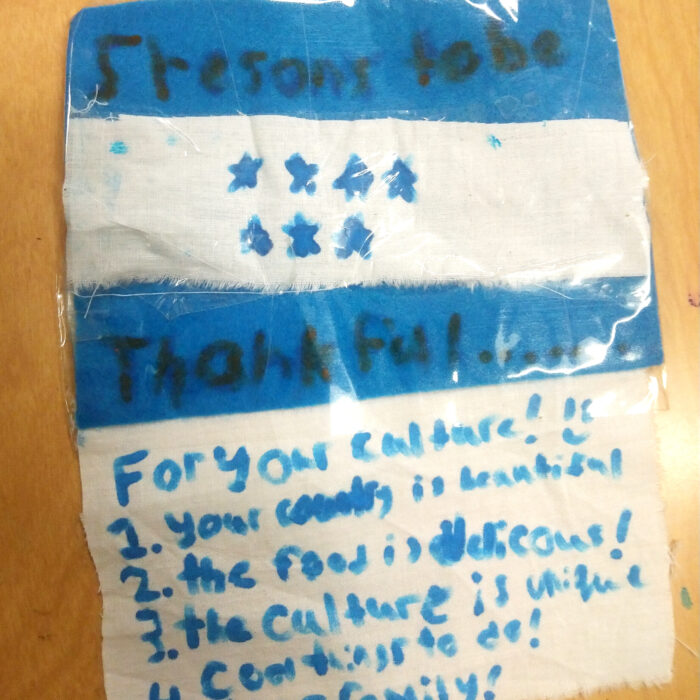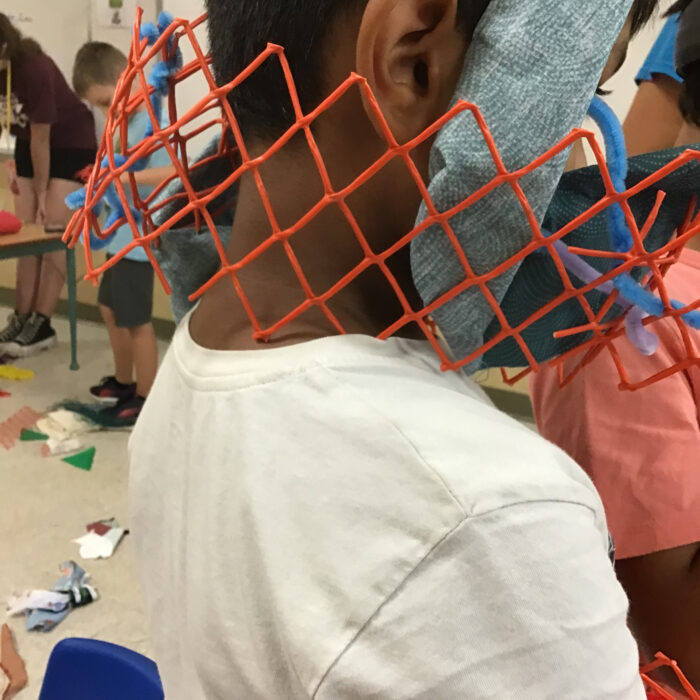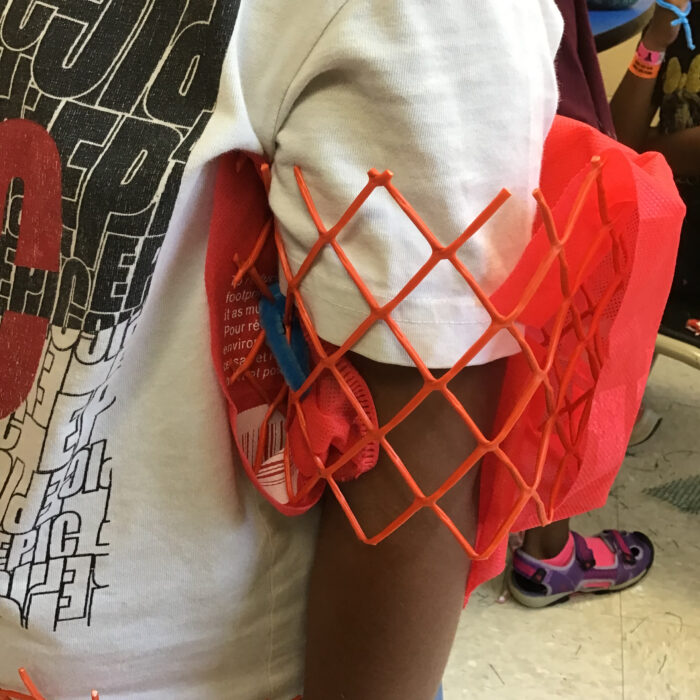Artasia at Queen Victoria
YMCA Day Camp
🖌️ Artist Educators: Sophie Zuccolo, Saadet Serra Hasiloglu
The Favourite Question
Whenever we enter the classroom, the first question kids always ask is, “What art are we making today?” And, once they start making art, they always ask their favorite, most exciting question. “And can I make ANYTHING I want?!” And when we enthusiastically answer, “Yes, you can!” They immediately get super energized and make whatever they can imagine: dresses rainbows on them, knight armor and even stuffed animals. And it’s always followed up with even more questions such as, “Can I use this fabric to make lots of bows?” Or, “Could I use this fencing as chainmail?” Or, “Could I make this look like my pet dog?” I think they really appreciate the chance to use unique materials, like fencing and natural dye, or expensive materials they can’t normally use, like our donated fabric. Over the course of these few weeks, they’ve gotten more comfortable with using these materials. And I think it’s really exciting for them to not only use these materials, but to be able to use their imagination and make anything they want with them!
Art and Food Bring People Together!
The Queen Victoria kids are always really excited when Artasia visits, but they were especially excited that we would be making 3D food that day. Serra, the artist educator, showed a sarma she made as an example, and they asked her a bunch of questions about it! As she shared more about her culture, the kids immediately got up and shared their favorite foods from their cultures as well. I think they were really excited by the chance to share their culture with the other kids in the class, inspired by what Serra had shared.
One kid made kimbab by putting “sliced vegetables” onto black and white felt and rolling it up. Upon seeing this, the kids exclaimed that it looked super cool and asked him to show how it was made. In the end, three other kids also made kimbab. Serra used a typewriter she brought to write his recipe, and some kids crowded around him to read it. I said, “Now I know how to make art kimbab AND real kimbab!” and the kids were delighted and wanted to try it too! The kid looked very proud that so many people liked his kimbab. Another kid made a recipe for being thankful for your culture. While writing the steps, she shared the personal value each step had with me and the kids at the table. She talked about how she looks forward to visiting her family in Honduras, especially because her cousins take her on midnight convenience store runs for her to try whatever she likes! The other kids thought this was really cool, and one kid was especially interested and discussed for a while. They also asked me about my culture, and when I told them I’m part Taiwanese, one of the kids made me a dumpling and a riceball with a smiley face on it.
This theme of sharing stories connected to food continued when Serra used her typewriter to diligently write out the recipes the kids told her, and they ran around sharing each other’s recipes. I thought it was sweet that the art project that day led to such lovely discussions. I guess art and food bring people together!
How to be a Careful Warrior?
During Week 4 of our programming, handling the plastic fence was a bit tricky. It was a concern on my part as an educator to look out for the kids’ safety, especially when they attempted making clothing or accessories with plastic fencing that covered their head and facial area. Throughout the session, I was urging kids to be careful and maybe not create something that’s close to their eyes. One of the kids really wanted to create something similar to a helmet – a kind of face coverage in a warrior’s clothing gear accompanied by additional pieces covering / protecting his arms and torso. Initially, I was hesitant about the idea, and I kept warning him that maybe the helmet is not necessary for this gear. However, he was determined to make it happen. Together, we came up with the plan to resort to fabric scraps! I asked him to think about how fabric could be a protective outer layer to the fencing. He then went back and alternated / modified his design multiple times, each time coming back and checking in with me, adding more and more fabric around the fencing and protecting his face.
I thought this was a great example of how giving kids creative liberties and trusting them with hard to handle materials could be rewarding. It not only develops their trust in themselves, but also helps find unconventional and original ways of making art.
Thank you to our Focus on Youth team members Ava Weinhardt and Sophie Prop for supporting us at this site!

